In the dynamic realm of artificial intelligence, DeepSeek V3 AI Model has emerged as a bold challenger reshaping the landscape. Developed by a resource-constrained Chinese startup, this open-source model defies expectations by delivering performance comparable to leading AI models like GPT-4, all while being created under strict sanctions and with a modest budget of $5.5 million. Join us as we explore DeepSeek V3’s journey, innovative methodologies, and its transformative potential in the AI ecosystem.
What is DeepSeek V3?
DeepSeek V3 is an open-source LLM developed to rival GPT-4. Created under U.S. sanctions that restrict access to high-end semiconductors, it uses Nvidia 8800 GPUs—less powerful than the A100s or H100s favored by other AI models. Despite this, DeepSeek V3 has achieved impressive results, especially in reasoning and mathematical tasks.
Key Features:
- Cost-Efficiency: Trained on a modest budget compared to other state-of-the-art models.
- Open-Source Accessibility: Available for developers and enterprises to deploy locally.
- Performance: Rivals GPT-3.5 and surpasses GPT-4 in specific domains like math and reasoning.
- Privacy-Focused: Can be hosted locally, ensuring sensitive data stays private.
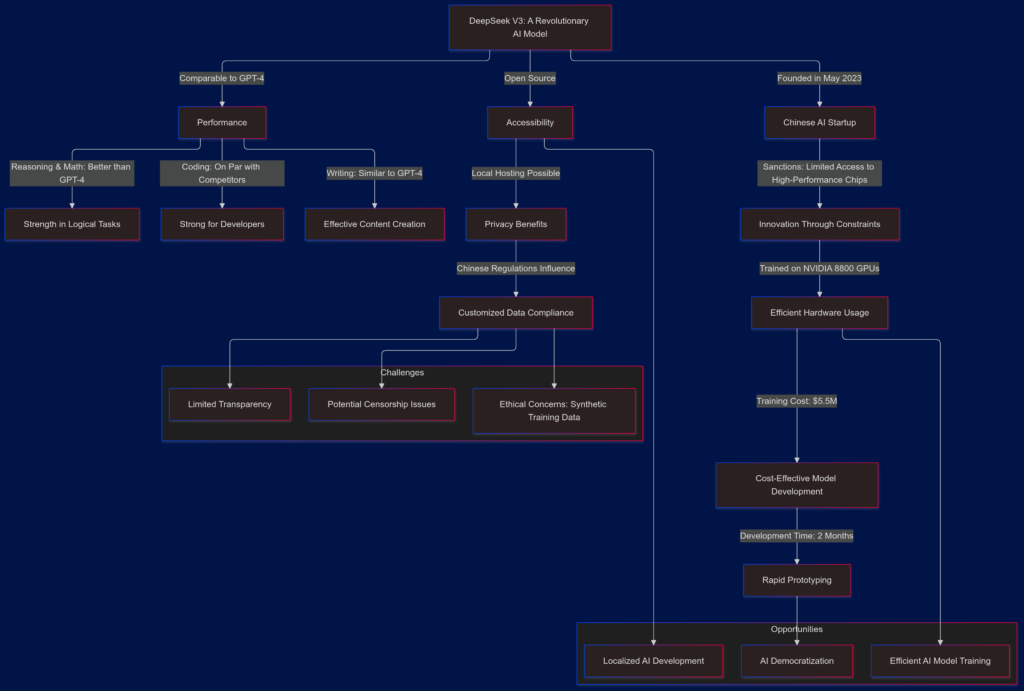
Innovative Approaches in Development
Efficiency with Limited Resources
DeepSeek V3 was developed using Nvidia 8800 GPUs, showcasing the ability to innovate without top-tier hardware. By optimizing training pipelines and reducing compute requirements, the team achieved notable cost and time savings.
Synthetic Training Data
One of DeepSeek V3’s most controversial aspects is its alleged use of synthetic data generated by GPT models. This approach significantly reduced training costs but raises questions about intellectual property and ethical AI development.
Local Hosting and Privacy
Unlike cloud-dependent models, DeepSeek V3 supports local hosting, making it an attractive option for organizations prioritizing data privacy. However, local hosting also introduces challenges such as hardware requirements and resource allocation.
Performance: A Comparative Analysis
Reasoning and Math:
DeepSeek V3 consistently outperforms GPT-3.5 and even rivals GPT-4 in reasoning and mathematical tasks, making it a valuable tool for finance, research, and other logic-heavy applications.
Coding Capabilities:
While developers often prefer Claude 3.5 for coding tasks, DeepSeek V3 delivers competitive results in code generation and debugging.
Writing and General Use:
DeepSeek V3 produces responses that closely mimic GPT-4, though with noticeable patterns and limitations, likely stemming from its training data and regulatory constraints.
Challenges and Limitations
Censorship and Data Restrictions
Chinese regulations limit the type of data that can be included in training, which may restrict the model’s ability to address sensitive or controversial topics.
Ethical Concerns
The use of synthetic training data, particularly from GPT models, raises questions about data ownership and legality.
Performance Variability
DeepSeek V3 excels in specific tasks but lacks the versatility of high-budget models like GPT-4 or Claude.
Robustness and Bias
The model may exhibit biases or inconsistencies, particularly in politically sensitive queries.
Use Cases and Applications
Reasoning and Analytical Tasks
Ideal for logic-heavy applications, such as financial modeling, academic research, and data analysis.
Edge Applications and Privacy-Sensitive Environments
With its support for local hosting, DeepSeek V3 is well-suited for scenarios requiring data privacy, such as healthcare and government projects.
Cost-Conscious AI Deployments
Organizations seeking cost-efficient alternatives to proprietary models can benefit from DeepSeek V3’s open-source nature and low training costs.
Comparing DeepSeek V3 with Other Leading Models
DeepSeek V3 stands out as a compelling alternative to established models like GPT-4 and Claude 3.5 Sonnet. Here’s a comparison of its strengths and weaknesses across various tasks, along with recommendations for use cases. However, these observations are based on user feedback and benchmark tests, and results may vary depending on individual use cases.
Summary of Creative Writing
DeepSeek V3 matches GPT-4 in many ways, especially for reasoning and mathematical tasks. If you appreciate GPT-4’s capabilities, you’ll likely find DeepSeek an excellent choice as well, particularly given its cost advantages. That said, Claude 3.5 Sonnet excels in creative writing and brainstorming tasks, with smoother and more imaginative outputs.
Final Verdict
Reasoning
- Winner: DeepSeek V3
- Runner-Up: Claude 3.5 Sonnet
- Third Place: OpenAI GPT-4
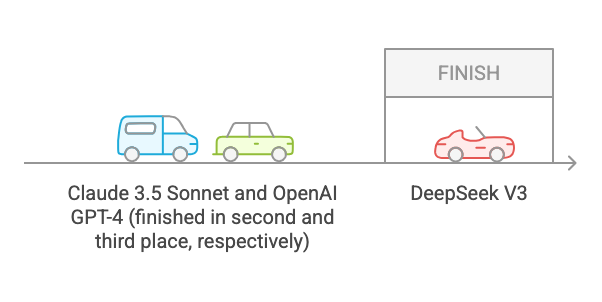
Math
- Winner: DeepSeek V3
- Runner-Up: Claude 3.5 Sonnet
- Third Place: OpenAI GPT-4
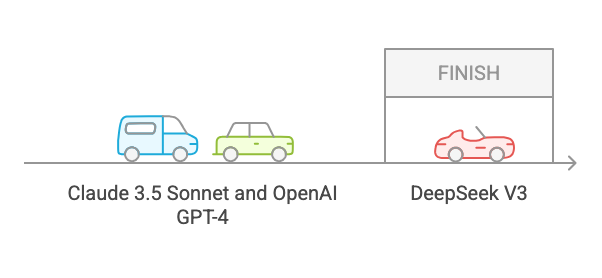
Coding
- Winner: Claude 3.5 Sonnet
- Runner-Up: DeepSeek V3 (on par with GPT-4)
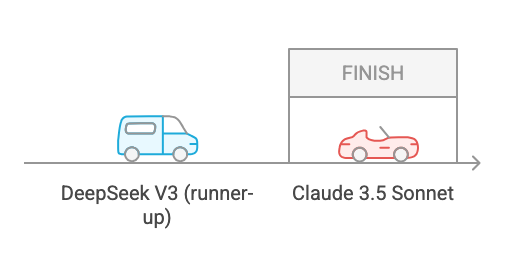
Creative Writing
- Winner: Claude 3.5 Sonnet
- Runner-Up: DeepSeek V3 (comparable to GPT-4)
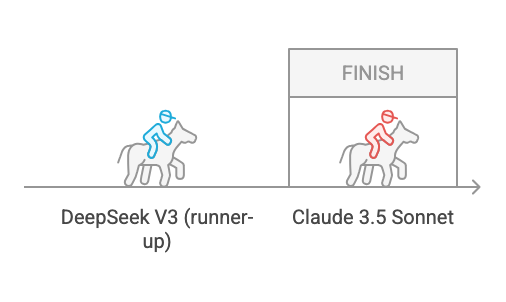
Who Should Use DeepSeek V3?
- Existing GPT-4 Users: If most of your use cases currently rely on GPT-4, DeepSeek V3 is a viable, cost-effective alternative with comparable performance.
- LLM-Based Application Builders: DeepSeek V3’s open-weight design and affordability make it ideal for developers building client-facing AI applications.
- Self-Hosting Enthusiasts: As an open-source model, DeepSeek V3 offers the flexibility to host and fine-tune it yourself, providing more control over its operation and integration.
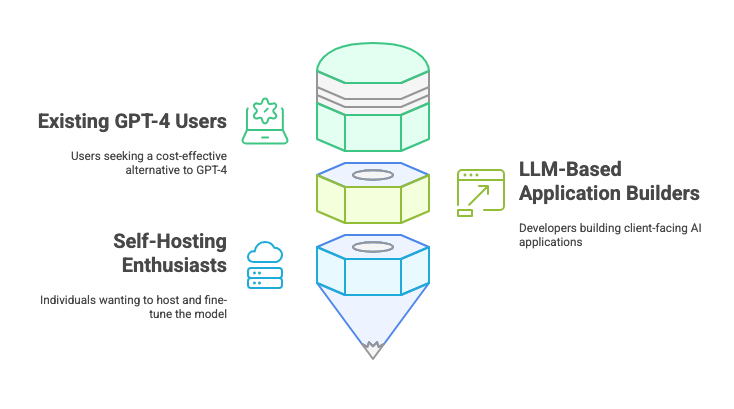
Disclaimer
The above comparisons and recommendations are based on early testing and community feedback. Performance may vary depending on specific tasks, data sets, and deployment environments. Additionally, while DeepSeek V3 is a cost-effective and open-source solution, its reliance on potentially synthesized data may raise ethical and compliance concerns for certain applications. Users are advised to carefully evaluate their use cases and regulatory requirements before adoption.
Implications for the Future of AI
DeepSeek V3 demonstrates how resource constraints can drive innovation, challenging the status quo in AI development. Its success could inspire a shift toward more cost-efficient, open-source models, democratizing access to advanced AI capabilities. However, its reliance on synthetic data highlights the need for clearer ethical guidelines in AI development.
Conclusion: Why DeepSeek V3 Matters
DeepSeek V3 is a testament to the power of resourcefulness and innovation in AI. Its cost-efficient development, competitive performance, and privacy-focused features make it a compelling alternative to proprietary models. While challenges like data restrictions and ethical concerns remain, DeepSeek V3 has undoubtedly set a new benchmark for open-source AI.
Explore DeepSeek V3 today and see how it can transform your AI workflows. Visit the official DeepSeek repository to download the model, test its capabilities, and join the growing community shaping the future of cost-effective AI innovation.
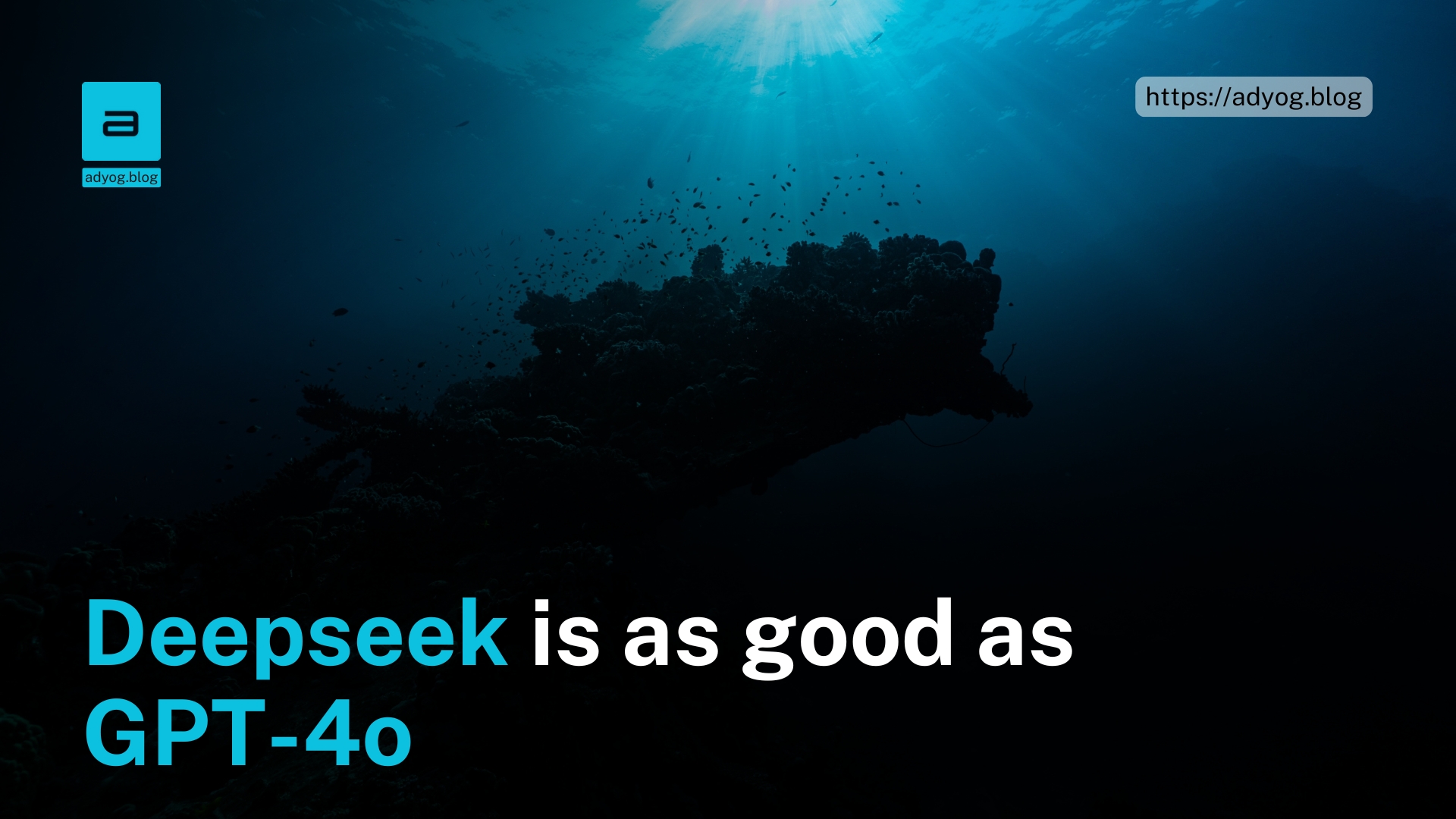




Leave a Reply